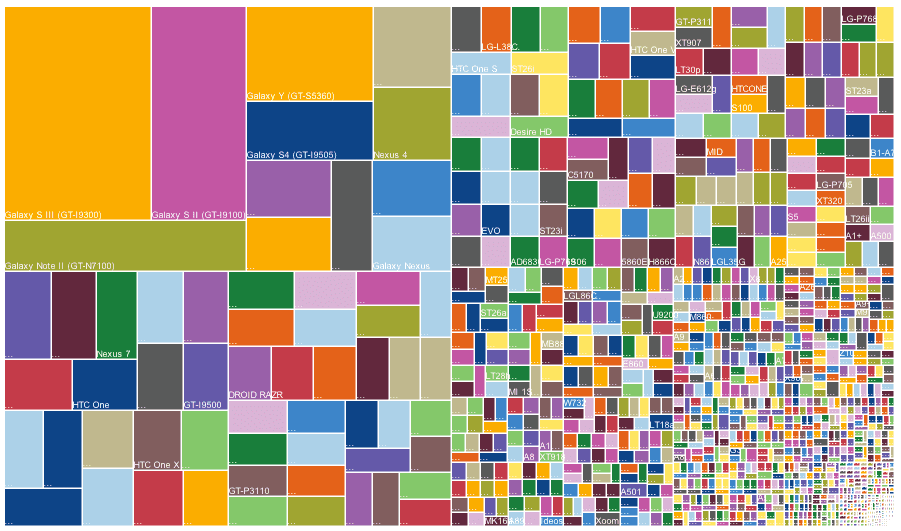“Fragmentation,” when applied to Android, which it often is, refers to the platform’s tendency to branch off in all different directions from the original core operating system. Google releases a version of Android, and then the manufacturers, like Samsung and HTC, alter it: they add their own software skins on top, they add or remove software, they modify the way the camera software works or what the buttons do.
Then there’s hardware fragmentation; Android phones come in different sizes and shapes, with wildly divergent abilities. Some have single-core processors, some have quad-core. Some have 4-megapixel cameras, some have 13-megapixel cameras. Some have NFC and some don’t. Some have wireless charging and some don’t. This isn’t necessarily bad; it does mean that users have much more choice than users of a less fragmented OS like Apple’s iOS. But there are downsides.

Android Fragmentation by Version
All of this makes it very difficult for the user to have a consistent experience, because it’s tremendously difficult for developers to make sure that apps work on all of these devices. And some developers either can’t or won’t ensure that that happens. So we care about Android fragmentation–and this infographic, over at OpenSignal, is a solid look at it, based on the devices that have downloaded the OpenSignal app. It shows how popular each branch of Android is, separating by specific device, brand, version of Android, or screen size/ratio. And look how many different branches there are!
Check out the interactive infographic here.









